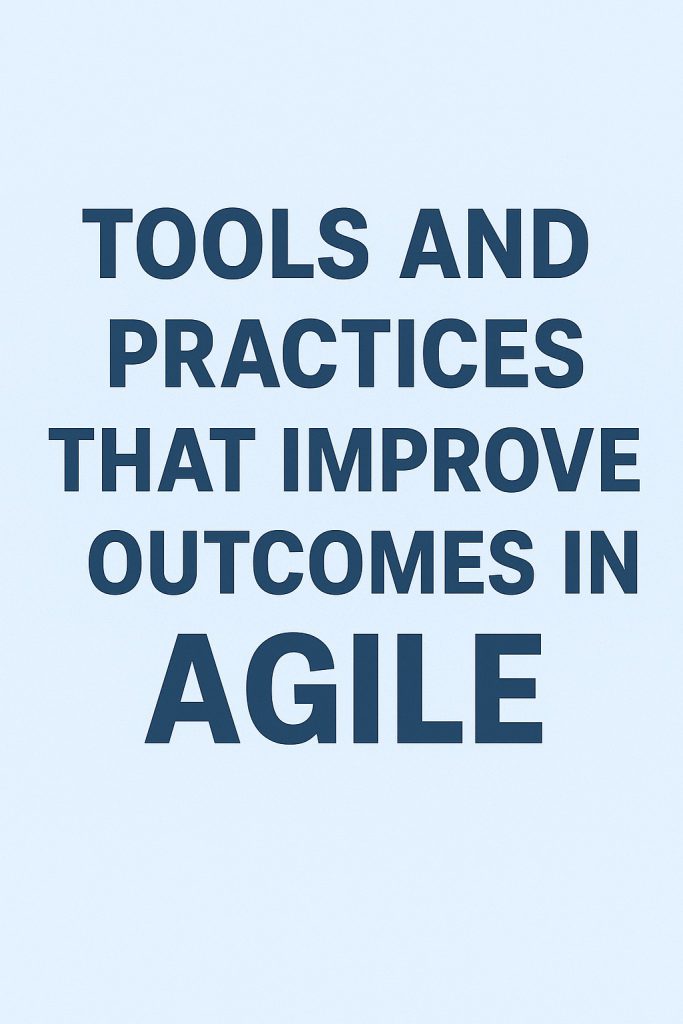There was a time when projects were planned months (sometimes years) in advance with rigid timelines, thick documents, and little room for change. Then came Agile, and everything changed.
Today, Agile methodology has become the heartbeat of modern work. From startups to global enterprises, Agile is helping teams adapt faster, deliver smarter, and respond better to change. But what exactly makes Agile so effective? Let’s break down the key concepts of Agile methodology that every professional — whether in tech, business, or project management — should understand.
- Iterative and Incremental Delivery
At the core of Agile is the idea of iteration breaking work into small, manageable pieces that can be completed in short cycles called sprints.
Instead of waiting months to deliver a final product, Agile teams deliver working increments regularly. Each sprint adds value, and the team learns from every cycle. This approach reduces risk, increases flexibility, and ensures continuous improvement.
Whether it is software features, marketing campaigns, or operational systems, Agile’s iterative structure helps teams stay aligned with real customer needs, not assumptions.
- Collaboration Over Silos
Traditional teams often work in silos developers here, marketers there, analysts somewhere else. Agile changes that.
It thrives on cross-functional collaboration, where individuals with diverse skills work together daily to achieve a shared goal.
In Agile, communication flows constantly through daily stand-ups, sprint reviews, and retrospectives. Everyone knows what’s happening, challenges are addressed quickly, and the entire team owns the outcome.
This collaborative rhythm creates transparency, accountability, and trust — the hallmarks of high-performing teams.
- Responding to Change Over Following a Plan
One of Agile’s most revolutionary ideas is its mindset toward change.
Instead of fearing it, Agile teams embrace change as a natural part of progress.
Customer priorities can shift, markets evolve, and technology advances — Agile provides the flexibility to adjust course without derailing the project.
This principle, famously captured in the Agile Manifesto, states:
“Responding to change over following a plan.”
It is this adaptability that makes Agile perfect for industries that thrive on innovation — from tech to finance, healthcare, education, and even creative fields.
- Continuous Feedback and Improvement
Agile is not a one-and-done process, it is built on continuous feedback.
After each sprint, teams review their work with stakeholders and customers to understand what’s working and what needs refinement.
This feedback loop ensures products evolve based on real-world insights, not assumptions.
It also allows teams to continuously improve their processes, communication, and performance.
In essence, Agile transforms teams into learning organisms — always growing, always improving.
- Customer Value at the Center
Every Agile practice from backlog prioritization to sprint planning is guided by one goal: delivering value to the customer.
Agile teams focus on what matters most to users and measure success by outcomes, not outputs.
This customer-centric focus helps organizations build solutions that actually solve problems — not just tick boxes on a project plan.
It is why companies like Google, Amazon, Spotify, and Microsoft rely heavily on Agile it keeps them customer-obsessed and future-ready.
- Empowered and Self-Organizing Teams
Agile gives power to the people doing the work.
Teams are self-organizing, meaning they decide how best to accomplish their goals rather than waiting for top-down directives.
This empowerment encourages creativity, accountability, and a sense of ownership.
The Scrum Master, for example, doesn’t manage the team but supports them removing obstacles, facilitating collaboration, and ensuring focus on priorities.
When people are trusted to lead their work, motivation skyrockets and innovation thrives.
- Transparency and Visibility
Agile promotes openness at every stage. Work progress is visualized using tools like Kanban boards, burndown charts, and sprint backlogs.
This visibility helps everyone from executives to team members stay aligned and make informed decisions.
By making progress and bottlenecks visible, Agile ensures accountability and helps teams act early to solve issues.
Transparency isn’t just a process it’s a culture of honesty, clarity, and shared purpose.
Why Agile Skills Matter Today
Agile is not just a buzzword anymore it is a core professional competency.
Whether you are in project management, product development, business analysis, or digital transformation, understanding Agile principles is now a must-have skill.
Organizations are increasingly seeking professionals who can navigate uncertainty, manage change, and deliver results iteratively.
Agile-trained professionals are seen as strategic assets they bring the mindset and structure needed to thrive in dynamic work environments.
Ready to Go Agile? Let’s Help You Get There.
At Scrum Consult, we help professionals and teams master Agile frameworks like Scrum, Kanban, and Business Analysis in Agile contexts.
Our programs are designed to be practical, hands-on, and career-transforming helping you gain the skills that make you stand out in the modern workplace.
Whether you want to become a Certified Scrum Master, learn Agile Business Analysis, or enhance your team’s collaboration — our training programs equip you to deliver value from day one.
Our next training cohort starts November 15, and this is the final one for the year.
Don’t wait until 2026 to level up take the step today and join hundreds of professionals already leading with Agile.
Click here scrumconsult.com to register now.

